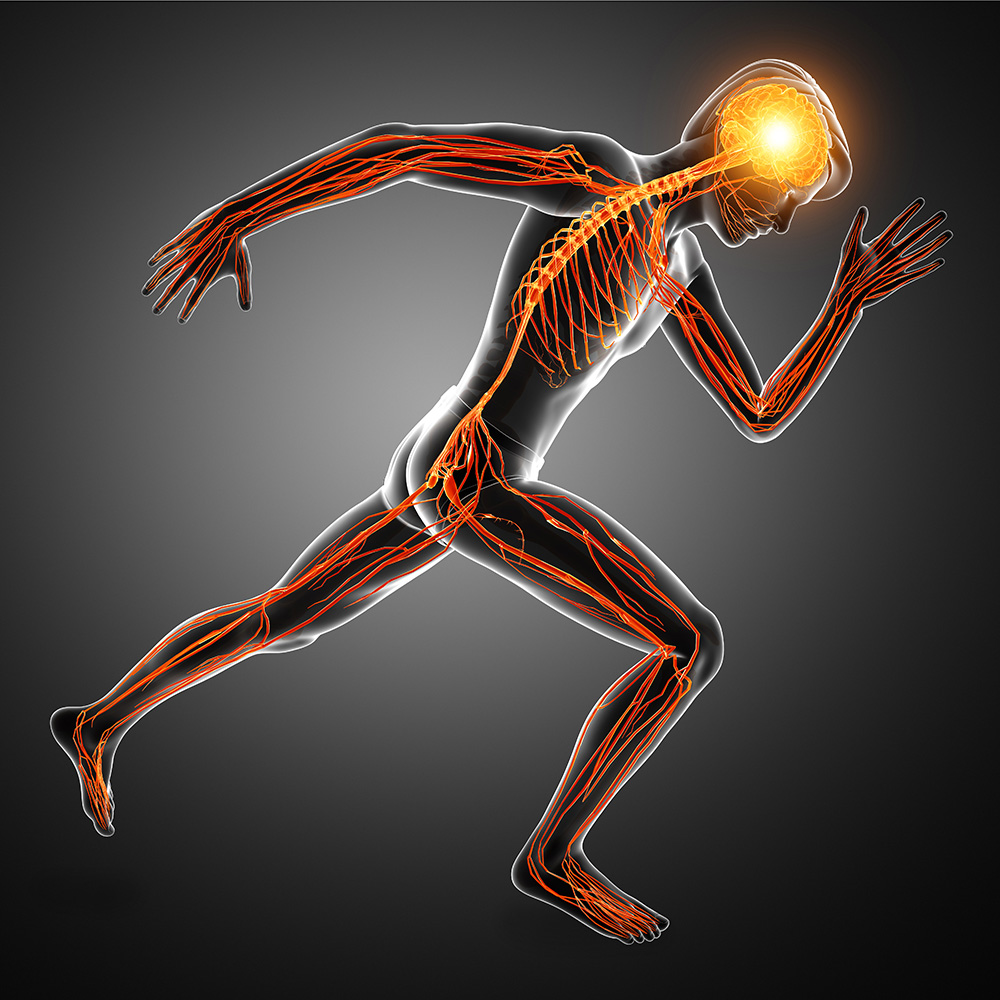When I first started running, it was laborious. My legs and lungs were not used to the five-kilometre routes I had committed to, so I felt each and every run throughout my whole body. Especially my legs. But as I solidified this habit, each run got progressively easier. My body learned that I could always finish the route and develop a steady pace that was easy to maintain. I became very familiar with all the running routes I had established near my place and my brain realized it could complete those routes on autopilot. My mind began to wander as my legs engaged their “muscle memory” and my conscious awareness of the route itself dropped.
Have you ever commuted home from work and realized that you don’t actually remember any of the trip? The same thing was happening with me while running. It was at this point I realized that my autopilot runs were not providing the satisfactory workout that I had previously enjoyed. As a neuroscientist, I couldn’t help but examine this phenomenon through the lens of neuroplasticity and brain networks. Through this exploration, I discovered an effective solution to this problem: mindfulness meditation.
To properly understand this solution, let me explain how “muscle memory” works in our brain. I use the scare quotes because muscles are only an accessory in this story—most of the significant changes that occur in developing muscle memory actually occur in the brain.
When we first start learning a new task like running, a brain network called the Fronto-Opercular-Parietal-Cingular System – I like to call it the FOCUS Network – is initially in charge, manually coordinating all our muscle activity to perform the task. In addition to developing athletic skill, the FOCUS network helps us coordinate our explicit attention towards our long-term goals and resist distractions. With some practice, the FOCUS Network learns which muscles need to be activated in which pattern to complete the task, and our performance improves.
When our FOCUS Network coordinates with our cerebellum, we can enter the flow state, which is deeply satisfying to our brain, and achieve greater levels of performance.
The FOCUS Network is very metabolically demanding, so our brain doesn’t like to use it if it doesn’t have to. As a result, once we start to develop the athletic skill we are looking for, our brain transitions this motor control to a different brain network better optimized for automatic movements: AKA autopilot. The main start of this autopilot network is the cerebellum, the mini brain that sits behind our big brain inside our skill. With the cerebellum now controlling our movements, we have achieved muscle memory and removed the need for explicit awareness of our actions. This transition to autopilot opens the door for the “Flow State”—the holy grail for athletic experiences where our actions are guided more by instinct than conscious control. It’s theorized that when our FOCUS Network coordinates with our cerebellum, we can enter the flow state, which is deeply satisfying to our brain, and achieve greater levels of performance.
Where I left off in my story about running, I had not yet achieved flow state. Unfortunately, my cerebellum had found a slow and steady pace for running that didn’t push my body hard enough. However, armed with this understanding of muscle memory, I had a solution: mindfulness meditation. Typically, one tries to allocate 100 per cent of our attention to our breath when we practice mindfulness, which activates the FOCUS Network. I tried this exercise while running. To my surprise, I discovered that by focusing on my breath, my pace increased. It turns out my “most stable” running pace is substantially slower than faster paces that I could maintain for the duration of my run. Putting my FOCUS Network back in charge, instead of my cerebellum, allowed me to slip into flow state. By simply focusing on my breath, I could more easily calibrate my speed and push myself for a deeper workout. Not only that, but by meditating while I ran, my brain got an extra dose of rejuvenation from being in the flow state during my workouts.
Using my FOCUS Network to bring my mind to the present moment gave my brain a much-needed break from the stress of coordinating my work duties and effort trying to plan my social life. Now things have come full circle. When I first started running, it was a whole-body activity that became more automatic as I developed muscle memory. Now, through mindfulness, I have returned to making running a whole-body activity, making the exercise both more restorative and more enjoyable in the process. If your workouts are becoming the domain of your cerebellum, consider incorporating some mindfulness to re-engage your FOCUS Network and leverage the flow state to make your muscle memory work for you.
You May Also Like – This is Your Brain on Running

Read This Story in Our 2023 Fall Fitness & Food Issue
Featuring this year’s winners of the Amazing Race Canada, Ty Smith and Kat Kastner on our cover. Inside our latest issue, you’ll find all the inspiration you need to carry you through the autumn season. From delicious high-protein recipes and how to resist the crunch of potato chips to running through the high peaks of the Colorado Rockies and the latest in nutrition and fitness, these pages are packed with expert knowledge and advice.
















